Wednesday 30th April 2014Online Art Sales Don't Threaten the Offline Art World

Much has been made of the e-commerce revolution, and with good reason. It has completely changed the way we interact with businesses, whether they are retail stores or service providers or any other kind of business. But one of the downsides to the widespread adoption of e-commerce has been the way that it has negatively impacted stores in the physical world, so-called 'brick and mortar' stores (as opposed to digital storefronts, aka websites). Stores have been closing doors left and right as they struggle to stay afloat in a tricky economy, especially when it's so much cheaper to move an entire business online in order to save money.
While it's taken certain areas of the retail economy more time to move towards a digital marketplace, the art world is no exception. It's now possible to buy prints from thousands of different online stores, and as you've probably learned from your Gallereo page, it's equally easy for individual artists to begin to make a name for themselves with a little bit of digital know-how and some sales talent.
Interestingly, though, instead of online art sales replacing the traditional offline world of galleries and auction houses, it appears that both sales channels are able to operate side by side with a minimum of interference. According to a report released this week by British insurer Hiscox, online fine art sales are going to more than double in the next five years, reaching an impressive $3.76 billion USD, up from its 2013 market value of $1.57 billion USD.
The reason the two markets don't collide, according to Robert Read, head of fine art at Hiscox, is “Young collectors are looking for artwork which is easy to buy and available at a wide range of prices," and when that fact is coupled with the comfort level of younger generations when it comes to making online purchases, there is a whole new market being created. So rather than supplanting the world of auction houses, the online art market should rather be considered an expansion of the art market as a whole, which makes it relatively unique in terms of the e-commerce world.
"The findings indicate that online art e-commerce will not exist as a separate entity – it will augment and co-exist with what is happening in the real, physical art world," Hiscox said.
So digital artists, take heart! Your prospects only stand to grow in the coming years, so make sure that you read up on all the best tips and tricks to ensure your digital sales success!
Posted on April 30th 2014 on 11:33pm
0 Comments
Wednesday 30th April 2014Artist Spotlight: Jeff Koons
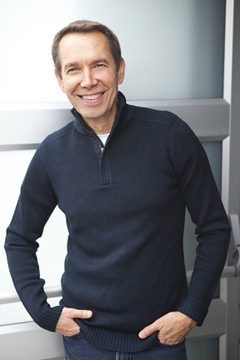
In this new series of posts, we're going to take a look at some of the dichotomies of the art world: the most influential artists and the rising stars, the well-known and the unknown, the sought-after and the reviled. Sometimes, as in the case of this week's post, it will be up to you to decide which categories the artist falls into. Jeff Koons is a very polarizing force in the contemporary art community for a number of reasons, but his staying power and his influence cannot be denied. As we discussed in a previous post, Koons currently holds the world record for highest auction price attained for a work by a living artist, when 'Balloon Dog (Orange)' sold recently for over $37 million USD.
Koons tends to work in a series modality, creating a number of works in a specific series as he explores various themes related to the series. The Balloon Dog sculptures, for instance, belong to a series he calls 'Celebration'. It's one of his most well-known series, largely because of the headline grabbing sums of money attached to the sale of the pieces. They feature a variety of large sculptures executed in colourized, highly reflective stainless steel.
The really interesting thing about Koons' work, though, at least in this writer's opinion, is the way he deals with criticism and with meaning. He claims that his works have no hidden meanings, that there is no sly satirical laughing up his sleeve at the modern art establishment, and yet that's exactly how many critics seem to view his work. This is probably at least partially informed by the way in which many of his pieces are constructed. Perhaps taking a leaf out of Andy Warhol's Factory book, Koons developed a 'colour-by-numbers' system that allowed his legions of assistants (over 100 at the latest count) to produce his works while staying true to his original vision, as though they were created "by a single hand".
"I think art takes you outside yourself, takes you past yourself. I believe that my journey has really been to remove my own anxiety. That's the key. The more anxiety you can remove, the more free you are to make that gesture, whatever the gesture is. The dialogue is first with the artist, but then it goes outward, and is shared with other people. And if the anxiety is removed everything is so close, everything is available, and it's just this little bit of confidence, or trust, that people have to delve into."
An interesting idea, but at least at the moment, it seems like he's removed so much anxiety by not actually being involved in the production process of any of his work. In this critic's opinion, it's something of a cop-out.
Posted on April 30th 2014 on 10:35pm
0 Comments
Wednesday 30th April 2014But Does Money Make It Art?
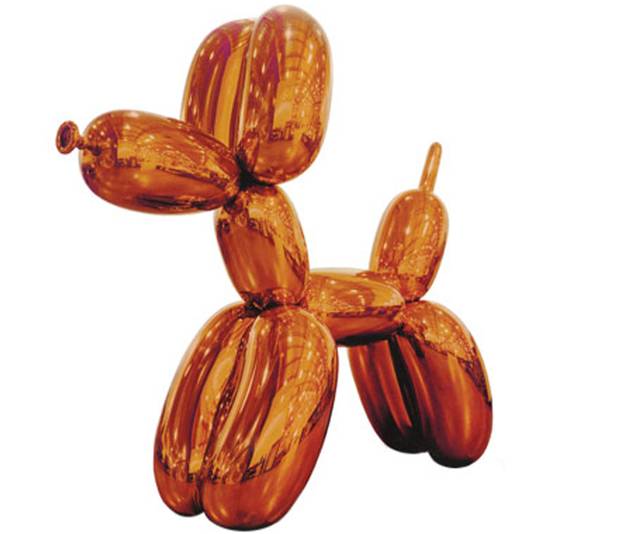
Ever since Marcel Duchamps stuck a urinal in a gallery, scrawled some initials on it, and called it art, people have been in turn baffled and amazed by the often bizarre world of modern art. For a while, collectors were content to be simply bemused by this emerging trend, if they were feeling charitable, and otherwise, regarding the rise of modern art as a fad not worthy of their valuable currency. The traditional art world rolled on, and the amounts of money that began to be paid for classical works eventually began to reach stratospheric levels. Almost all of the most expensive paintings ever sold were auctioned in the last 20 or 30 years, with the current record holder for highest auction price held by 'The Card Players' by Paul Cezanne, which was sold for an astonishing $269.4 million USD in 2011.
A curious fact about these incredibly valuable works, of course, is that the artist never saw a dime of these prices, largely because they are only able to command such prices posthumously. With the go go go world of modern art, however, this has all begun to change. Gerhard Richter, a German born artist, set the world record for a piece sold by a living artist with his painting Abstraktes Bild, which sold for $34 million USD in 2011. He then smashed his own record a scant 2 years later in 2013, when his piece Domplatz, Mailand was sold for $37 million. These are incredible figures for a still-living artist - or at least, they were until the tail end of 2013.
Jeff Koon's 'Balloon Dog (Orange)', shown above, is now the world record holder for the highest auction price for a work by a living artist, at a truly incredible $58.4 million USD via Christie's auction house in New York City. According to Christie's, "the work is considered the supreme example from Koon’s highly desired and acclaimed Celebration Series, begun in the early 1990s. The series evolved from Koons's desire to recreate the ecstatic experiences of a child's enjoyment of the world with universal signifiers."
This seems like something of a far-flung sentiment for a stainless steel representation of a balloon animal. Far be it for this writer to question the erudite minds at Christie's, but as they exist entirely to turn a profit, one is left wondering '… but is it art?'
Posted on April 30th 2014 on 08:42pm
0 Comments
Friday 25th April 2014Never Before Seen Digital Works by Warhol Recovered
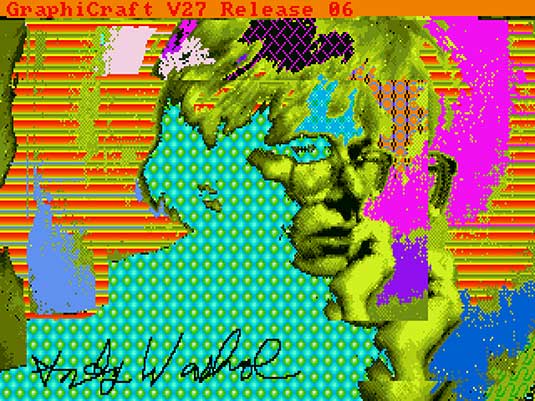
Perhaps the most dreaded scourge of the digital artist is data loss. Unless you manage to regularly maintain a strict backup schedule to keep copies of all your digital work files in separate places (and let's be honest - that's right up there with flossing every day and jogging 4 times a week) you have probably encountered the problem before. But what happens when you diligently back up your work, only to have the storage medium you used go out of style? Imagine being a filmmaker who has copies of all their work on BetaMax tapes. Well, the same thing apparently happened to works by pioneering pop art icon Andy Warhol.
Originally commissioned in 1985 by then-thriving computer company Commodore to create a series of works using their computer graphics software, Warhol produced a number of images using a now-hilariously antiquated program named GraphiCraft, which was never the less the pinnacle of computer graphics technology at the time. Out of the whole series he created, only one piece was ever used in a real-world setting, a picture of artist Debbie Harry. All the rest of the images were saved to floppy disks, and left to gather dust and be forgotten in some back corner of Warhol's studio.
After the artist's death, however, the disks were part of a collection that was donated to The Warhol, a museum in Pittsburgh dedicated to all things Andy Warhol, part of the Carnegie Museums collection. However, by this time, Commodore was going bankrupt, and the museum had little technical knowledge that would have allowed them to access the content of the disks - and, not knowing was contained on them, they had little incentive to find out.
Fast forward to 2014, when Cory Arcangel saw a Youtube video of Warhol promoting the Amiga 1000, which inspired him to reach out to the museum to find out what happened to his experiments with the first computer graphics systems. The result was a collaboration between The Warhol's chief archivist, Matt Wrbican, and a group of computer enthusiasts from Carnegie Mellon University, the CMU Computer Club. Thanks to the expertise of the CMU Computer Club, the images were able to be recovered after painstaking tests and careful problem solving. For those of you who've read our recent post on drawing tablets, you'll be easily able to see how even the most capable artists would have struggled to adapt to the mouse interface that was standard issue on most computer systems at the time!
Posted on April 25th 2014 on 10:55pm
0 Comments
Wednesday 16th April 2014Foregoing Photoshop: The Work of JeeYoung Lee
Perhaps the strangest result of the era of digital imagery is the effect it has had on the photograph. When photography was originally developed, it was easily the most precise of the possible methods to reproduce a particular object or scene with near-scientific accuracy. There were still ways to manipulate perception of the image, and even some fairly sophisticated optical illusions, but for the most part, photographs were regarded as reliable documentation, free of the artist license inherently given to painters and other artists. All this would change.
Enter the world of the digital photograph. With even the most basic training in Photoshop or similar image editing programs, the average person is capable of creating a photographic composite that is a complete fabrication, all while looking real. This creates an interesting blurring of the lines between photography and painting, since painting with pixels that look photo-realistic is still painting. As a result, some artists have expressed a deep frustration with the ease of creation of fantastical landscapes and scenes.
One such artist is JeeYoung Lee, who works out of a small studio in Seoul, South Korea. The studio really is small, measuring just 3 x 6 meters, but the scenes she constructs within it are anything but. Instead of using Photoshop and other digital methods to create her fantastical works, she takes the time to actually construct the scenes in her studio by hand. Some of the results are more successful than others, but the ones that do succeed are truly incredible, and are made even more so by her talented handicraft.
In a world of ersatz people where everyone and everything is airbrushed to within an inch of its life, it's refreshing to see a talented artist deliberately defying the conventions of a digitally fabricated reality in favour of actual construction. As both artist, photographer, set designer and model, Lee has a degree of intimacy in her photography that isn't always apparent in the works of others, and the fact that many of her scenes are depictions of her life, whether memories of childhood or dreams of fear, only serves to reinforce the personally cathartic nature of her work. Regardless of your opinion of her current pieces, she's definitely an emerging talent that should be watched closely as she develops, sans Photoshop.
To see a gallery of some of Lee's most popular works, check out the selection
here.
Image shown above is 'Treasure Hunt', by JeeYoung Lee.
Posted on April 16th 2014 on 06:28pm
0 Comments
Friday 11th April 2014The Best Cities for Art Lovers 8: Seattle
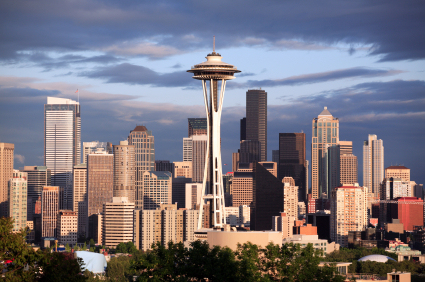
When most people think of Seattle, they think of beautiful forests, the Space Needle, and the birthplace of the Starbucks coffee franchise. If they're a bit older, they might think of famous bands that rose out of the grunge music scene in the early 1990s (Nirvana, anyone?). But the Pacific Northwest has been home to great artists for hundreds, if not thousands of years, as the huge number of galleries in Seattle and the surrounding area show. If 'thousands of years' throws you off, then you're forgetting the fact that various Native tribes have inhabited the Pacific Northwest long before Europeans ever showed up. Fortunately, a number of artifacts that might otherwise have been lost have been preserved in an impressive showcase of Native artwork found in galleries throughout the region.
Seattle itself is home to several world-class art galleries, chief among which is the Seattle Art Museum, or 'SAM' as it is affectionately known. Interestingly, the museum's collection is rather light on the traditional European works that many of us are used to encountering in art galleries, despite having a large collection overall. This gap in their repertoire tends to be filled by temporary travelling exhibitions, which makes for an interesting experience no matter when you happen to visit, but the regular collection contains an impressive array of Native artwork.
One of the museum's Matisse paintings was subject of quite the controversy in the late 1990s, when it came to light that the piece had actually been looted by the Nazis during World War II and sold to the museum under false pretenses by a gallery, who they later successfully sued. This may partially explain their aversion to classical European works, but the result is a pleasantly different gallery experience.
One of the SAM's satellite galleries, the Seattle Asian Art Museum, now housed in the old SAM building, features a number of beautiful collections from all throughout Asia, ranging from Chinese pottery to Indian portraiture to Thai statuary, with a nice blend of works by contemporary Asian artists as well. Perhaps unique in North America, there is also an extensive collection of artwork by Australian aboriginal peoples.
If these galleries don't appeal, the natural beauty of Seattle and its vibrant artistic traditions have called a huge number of artists to the city, and a number of commercial galleries have sprung up in response to the demand. A huge number of them are concentrated in an area of the city known as Pioneer Square, cheek to jowl with a number of small artists studios which are also occasionally open to the public.
Posted on April 11th 2014 on 03:30pm
0 Comments
Tuesday 08th April 2014Drawing Tablets
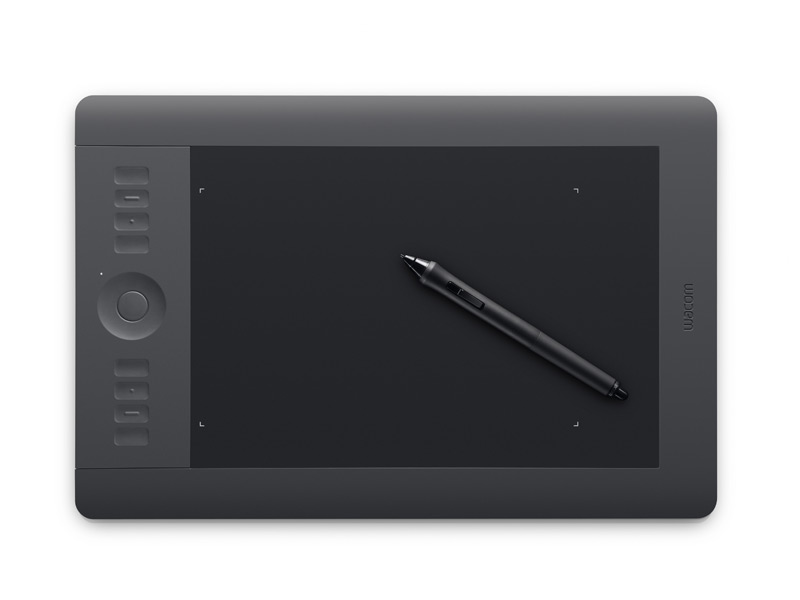
Ever since the first days of computer graphics programs, when Andy Warhol and his contemporaries were just beginning to dip a toe into the pool that would become the wonderful world of digital art, people have struggled with input devices. The mouse, invented by Doug Engelbart, is a great device for using programs and generally interacting with a graphical user interface, but it really starts to fall down on the job when it comes to the type of precise, artistic movements that artists demand in their work. Enter the drawing tablet, stage left.
The first drawing tablet for home use was designed for the Apple II and its generation, and was known as the KoalaPad. In 1984, a reviewer in Byte magazine (one of the biggest home computing magazines of the day) was rather unimpressed with the capabilities of the technology, and said that he found he had better luck using a mouse. Those days are long gone.
For any serious digital artist, a drawing tablet is a must in today's digital world. The technology has progressed to a point where there is no way that a mouse can provide the level of control that a drawing tablet offers. Even the most basic tablets in today's market provide pixel-perfect positional control, and most (if not all) also provide some level of pressure sensitivity, allowing you an additional degree of input control. The more advanced (and thus more expensive) tablets have additional degrees of sensitivity, and many of them are even capable of detecting the angle at which the stylus is held, for a third level of input control. If you're a truly serious artist, or if you just like to have all the best equipment, it's even possible to purchase a drawing tablet that is directly integrated with a tablet computer and its screen, meaning that you can run your applications directly on the tablet, and draw right on the screen for perfect accuracy. The downside to this power, naturally, is that they are incredibly expensive.
Whether you're hoping to explore the world of digital painting (the "undo" command makes it much more accessible for beginners), or doing regular retouching work in Photoshop, a drawing tablet will completely change the way you interact with your computer. Smaller tablets can be purchased for under £100, so there's no longer any excuse to avoid having one! If you're still not sure, many shops have demo models available for customers to test, so give it a shot, and see what you're missing!
Posted on April 08th 2014 on 01:30pm
0 Comments
Friday 04th April 2014The GIF as an Art Form
It's almost impossible to spend any amount of time on the internet without running into animated GIFs. You may not have even realized it, but you have, although the animated GIF (a looping series of images that creates a video-like effect, depending on frame rate) has come a long way from the hideous animated dancing mailbox icons and smiley faces that decorated some of the first webpages to grace the Internet back in the 1990s. By now, the GIF format has been pushed to the limit, being used for a number of purposes from the TV and movie clips that adorn Buzzfeed pages to hilarious home videos of cats shared through social media. But that's not all that GIF has been cooking up, thanks to digital artists hungry to explore the possibilities of every conceivable format.
While most people pronounce GIF with a hard 'g' sound, as in 'good', the creator of the file format apparently originally intended the name to be pronounced with a soft 'g' sound, making the name sound like 'jiff'. Regardless of how it's pronounced, however, the format has been gaining recognition among a new generation of digital artists who are innately comfortable working in digital media. These artists got quite a boost recently thanks to internet tech giant Google's beneficence, as they recently created the Motion Photography Prize, the very first award dedicated to artists working with the animated GIF format.
This isn't simply a viral publicity stunt from Google either, as they partnered with the prestigious Saatchi Gallery in London for the competition, and Nigel Hurst, the Saatchi Gallery CEO, was one of the judges, along with noted director Baz Luhrmann, and artists Cindy Sherman and Tracey Emin, among others. The response to the call for entries was equally impressive, garnering submissions from over 4,000 people from countries all around the world. Submissions were sorted into six categories: people, action, lifestyle, night, urban, and landscape.
The overall winner was from Brooklyn-based artist Christina Rinaldi, shown above, for her GIF depicting the brushstrokes of a New York window cleaner. While an interesting submission, some of the finalists in the individual categories seem to show a bit more artistic flair and merit. To view the full set of finalists and some of the runners-up, be sure to visit the Saatchi Gallery website
here.
Posted on April 04th 2014 on 06:00pm
0 Comments
Tuesday 01st April 2014Chinese Protest Art

China is in a very strange position these days - despite being home to one of the oldest recorded civilizations in the world, and having a rich cultural heritage steeped in artistic traditions, they are also host to one of the most repressive political regimes on the planet. Internet services are carefully censored and monitored by a system known as 'the Great Firewall of China', and political and artistic statements are discouraged by the ruling Communist party. But even as this repression continues - and perhaps, to some extent, even because of it - there are a number of active Chinese artists who have captured international attention and highlighted the interplay between protest and art in a stifled intellectual climate.
By now, most art enthusiasts have heard the name of Ai Weiwei, a Chinese artist who has been the subject of documentary films (such as Never Sorry, as we discussed in a previous post) and invited to galleries around the world, all while being persecuted by the Chinese government, but there are a quite a number of lesser-known artists who are equally interesting.
Intellectual climates aren't the only thing being stifled in China, as the staggeringly rapid growth of the economy and industry has left the natural environment struggling to support healthy living conditions. Choking smog is a daily fact of life in most major urban centers in China, and this fact was recently driven home by Beijing-based artist Liang Kegang. Having visited the south of France on business, he brought back several souvenirs - one of which was a jar of clean, clear air from Provence. Amusingly enough, he put the jar up for auction at a popular art auction house, and the jar sold for over 5000 yuan - nearly £500 - to a collector.
Giving an interview about the piece, Liang said, “Air should be the most valueless commodity, free to breathe for any vagrant or beggar. This is my way to question China’s foul air and express my dissatisfaction.” Perhaps not quite the grand gesture he was hoping for, but it's just one of a number of similar art-meets-protest projects that have been popping up all over China in recent years with a focus on climate problems. A performance art project in Beijing in February had 20 artists playing dead outside the Temple of Heaven, all wearing dust masks. Another performance piece in Changsha had artists hosting a mock funeral for the last living citizen of Changsha, who they claimed would die of the smog.
Perhaps most surreal of all? Anyone who ever watched the late 80's movie Spaceballs, starring Mel Brooks and Rick Moranis, will recall a scene where the president cracks open a can of 'Perri-air', fresh air in can form - now, 'Good Person' brand cans of clean air can be purchased online in China from TaoBao for under £2. Sometimes, life really does imitate art.
Posted on April 01st 2014 on 01:06am
0 Comments
 Much has been made of the e-commerce revolution, and with good reason. It has completely changed the way we interact with businesses, whether they are retail stores or service providers or any other kind of business. But one of the downsides to the widespread adoption of e-commerce has been the way that it has negatively impacted stores in the physical world, so-called 'brick and mortar' stores (as opposed to digital storefronts, aka websites). Stores have been closing doors left and right as they struggle to stay afloat in a tricky economy, especially when it's so much cheaper to move an entire business online in order to save money.
Much has been made of the e-commerce revolution, and with good reason. It has completely changed the way we interact with businesses, whether they are retail stores or service providers or any other kind of business. But one of the downsides to the widespread adoption of e-commerce has been the way that it has negatively impacted stores in the physical world, so-called 'brick and mortar' stores (as opposed to digital storefronts, aka websites). Stores have been closing doors left and right as they struggle to stay afloat in a tricky economy, especially when it's so much cheaper to move an entire business online in order to save money. In this new series of posts, we're going to take a look at some of the dichotomies of the art world: the most influential artists and the rising stars, the well-known and the unknown, the sought-after and the reviled. Sometimes, as in the case of this week's post, it will be up to you to decide which categories the artist falls into. Jeff Koons is a very polarizing force in the contemporary art community for a number of reasons, but his staying power and his influence cannot be denied. As we discussed in a previous post, Koons currently holds the world record for highest auction price attained for a work by a living artist, when 'Balloon Dog (Orange)' sold recently for over $37 million USD.
In this new series of posts, we're going to take a look at some of the dichotomies of the art world: the most influential artists and the rising stars, the well-known and the unknown, the sought-after and the reviled. Sometimes, as in the case of this week's post, it will be up to you to decide which categories the artist falls into. Jeff Koons is a very polarizing force in the contemporary art community for a number of reasons, but his staying power and his influence cannot be denied. As we discussed in a previous post, Koons currently holds the world record for highest auction price attained for a work by a living artist, when 'Balloon Dog (Orange)' sold recently for over $37 million USD. Ever since Marcel Duchamps stuck a urinal in a gallery, scrawled some initials on it, and called it art, people have been in turn baffled and amazed by the often bizarre world of modern art. For a while, collectors were content to be simply bemused by this emerging trend, if they were feeling charitable, and otherwise, regarding the rise of modern art as a fad not worthy of their valuable currency. The traditional art world rolled on, and the amounts of money that began to be paid for classical works eventually began to reach stratospheric levels. Almost all of the most expensive paintings ever sold were auctioned in the last 20 or 30 years, with the current record holder for highest auction price held by 'The Card Players' by Paul Cezanne, which was sold for an astonishing $269.4 million USD in 2011.
Ever since Marcel Duchamps stuck a urinal in a gallery, scrawled some initials on it, and called it art, people have been in turn baffled and amazed by the often bizarre world of modern art. For a while, collectors were content to be simply bemused by this emerging trend, if they were feeling charitable, and otherwise, regarding the rise of modern art as a fad not worthy of their valuable currency. The traditional art world rolled on, and the amounts of money that began to be paid for classical works eventually began to reach stratospheric levels. Almost all of the most expensive paintings ever sold were auctioned in the last 20 or 30 years, with the current record holder for highest auction price held by 'The Card Players' by Paul Cezanne, which was sold for an astonishing $269.4 million USD in 2011. Perhaps the most dreaded scourge of the digital artist is data loss. Unless you manage to regularly maintain a strict backup schedule to keep copies of all your digital work files in separate places (and let's be honest - that's right up there with flossing every day and jogging 4 times a week) you have probably encountered the problem before. But what happens when you diligently back up your work, only to have the storage medium you used go out of style? Imagine being a filmmaker who has copies of all their work on BetaMax tapes. Well, the same thing apparently happened to works by pioneering pop art icon Andy Warhol.
Perhaps the most dreaded scourge of the digital artist is data loss. Unless you manage to regularly maintain a strict backup schedule to keep copies of all your digital work files in separate places (and let's be honest - that's right up there with flossing every day and jogging 4 times a week) you have probably encountered the problem before. But what happens when you diligently back up your work, only to have the storage medium you used go out of style? Imagine being a filmmaker who has copies of all their work on BetaMax tapes. Well, the same thing apparently happened to works by pioneering pop art icon Andy Warhol.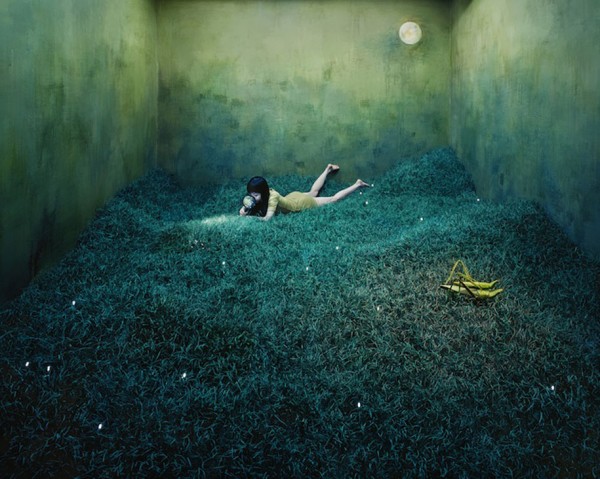
 When most people think of Seattle, they think of beautiful forests, the Space Needle, and the birthplace of the Starbucks coffee franchise. If they're a bit older, they might think of famous bands that rose out of the grunge music scene in the early 1990s (Nirvana, anyone?). But the Pacific Northwest has been home to great artists for hundreds, if not thousands of years, as the huge number of galleries in Seattle and the surrounding area show. If 'thousands of years' throws you off, then you're forgetting the fact that various Native tribes have inhabited the Pacific Northwest long before Europeans ever showed up. Fortunately, a number of artifacts that might otherwise have been lost have been preserved in an impressive showcase of Native artwork found in galleries throughout the region.
When most people think of Seattle, they think of beautiful forests, the Space Needle, and the birthplace of the Starbucks coffee franchise. If they're a bit older, they might think of famous bands that rose out of the grunge music scene in the early 1990s (Nirvana, anyone?). But the Pacific Northwest has been home to great artists for hundreds, if not thousands of years, as the huge number of galleries in Seattle and the surrounding area show. If 'thousands of years' throws you off, then you're forgetting the fact that various Native tribes have inhabited the Pacific Northwest long before Europeans ever showed up. Fortunately, a number of artifacts that might otherwise have been lost have been preserved in an impressive showcase of Native artwork found in galleries throughout the region. Ever since the first days of computer graphics programs, when Andy Warhol and his contemporaries were just beginning to dip a toe into the pool that would become the wonderful world of digital art, people have struggled with input devices. The mouse, invented by Doug Engelbart, is a great device for using programs and generally interacting with a graphical user interface, but it really starts to fall down on the job when it comes to the type of precise, artistic movements that artists demand in their work. Enter the drawing tablet, stage left.
Ever since the first days of computer graphics programs, when Andy Warhol and his contemporaries were just beginning to dip a toe into the pool that would become the wonderful world of digital art, people have struggled with input devices. The mouse, invented by Doug Engelbart, is a great device for using programs and generally interacting with a graphical user interface, but it really starts to fall down on the job when it comes to the type of precise, artistic movements that artists demand in their work. Enter the drawing tablet, stage left.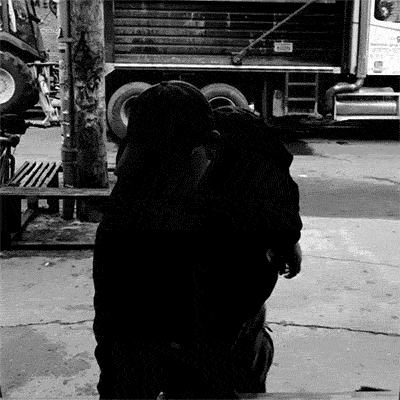
 China is in a very strange position these days - despite being home to one of the oldest recorded civilizations in the world, and having a rich cultural heritage steeped in artistic traditions, they are also host to one of the most repressive political regimes on the planet. Internet services are carefully censored and monitored by a system known as 'the Great Firewall of China', and political and artistic statements are discouraged by the ruling Communist party. But even as this repression continues - and perhaps, to some extent, even because of it - there are a number of active Chinese artists who have captured international attention and highlighted the interplay between protest and art in a stifled intellectual climate.
China is in a very strange position these days - despite being home to one of the oldest recorded civilizations in the world, and having a rich cultural heritage steeped in artistic traditions, they are also host to one of the most repressive political regimes on the planet. Internet services are carefully censored and monitored by a system known as 'the Great Firewall of China', and political and artistic statements are discouraged by the ruling Communist party. But even as this repression continues - and perhaps, to some extent, even because of it - there are a number of active Chinese artists who have captured international attention and highlighted the interplay between protest and art in a stifled intellectual climate.



